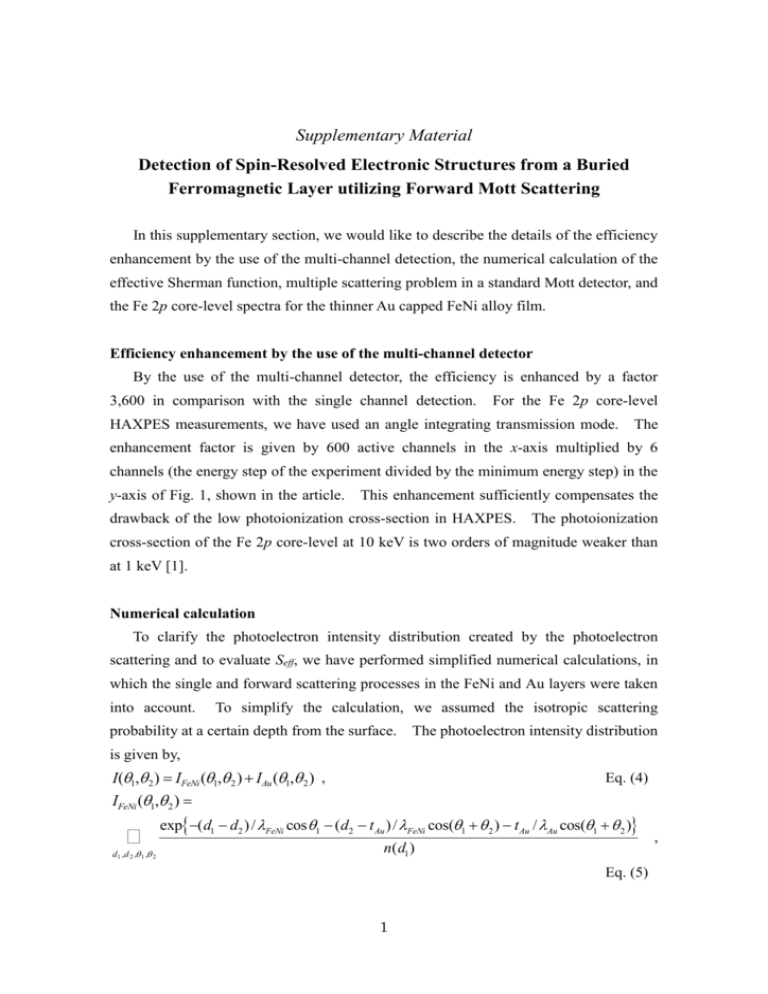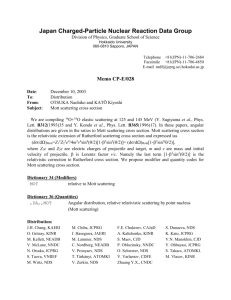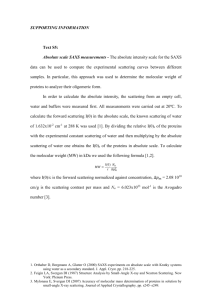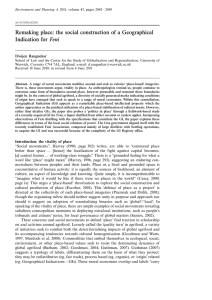spin_HAXPES_Supple_v1
advertisement

Supplementary Material
Detection of Spin-Resolved Electronic Structures from a Buried
Ferromagnetic Layer utilizing Forward Mott Scattering
In this supplementary section, we would like to describe the details of the efficiency
enhancement by the use of the multi-channel detection, the numerical calculation of the
effective Sherman function, multiple scattering problem in a standard Mott detector, and
the Fe 2p core-level spectra for the thinner Au capped FeNi alloy film.
Efficiency enhancement by the use of the multi-channel detector
By the use of the multi-channel detector, the efficiency is enhanced by a factor
3,600 in comparison with the single channel detection.
For the Fe 2p core-level
HAXPES measurements, we have used an angle integrating transmission mode. The
enhancement factor is given by 600 active channels in the x-axis multiplied by 6
channels (the energy step of the experiment divided by the minimum energy step) in the
y-axis of Fig. 1, shown in the article. This enhancement sufficiently compensates the
drawback of the low photoionization cross-section in HAXPES. The photoionization
cross-section of the Fe 2p core-level at 10 keV is two orders of magnitude weaker than
at 1 keV [1].
Numerical calculation
To clarify the photoelectron intensity distribution created by the photoelectron
scattering and to evaluate Seff, we have performed simplified numerical calculations, in
which the single and forward scattering processes in the FeNi and Au layers were taken
into account.
To simplify the calculation, we assumed the isotropic scattering
probability at a certain depth from the surface. The photoelectron intensity distribution
is given by,
I(q1,q 2 ) = IFeNi (q1,q 2 ) + IAu (q1,q 2 ) ,
IFeNi (q1,q 2 ) =
å
d1 ,d 2 ,q 1 ,q 2
Eq. (4)
exp{ -(d1 - d2 ) / lFeNi cos q1 - (d2 - t Au ) / lFeNi cos(q1 + q 2 ) - t Au / lAu cos(q1 + q 2 )}
n(d1 )
Eq. (5)
1
,
IAu (q1,q 2 ) =
å
exp{ -(d1 - t Au ) / lFeNi cos q1 - (t Au - d2 ) / lAu cosq1 - d2 / lAu cos(q1 + q 2 )}
n(d1 )
d1 ,d 2 ,q 1 ,q 2
,
Eq. (6)
where 1 is the emission angle of the generated photoelectrons with respect to the
surface normal direction at a depth of d1 from the surface, 2 is the scattering angle of
the photoelectrons at a depth of d2 (d2 d1), and n(d1) is the number of photoelectron
trajectories generated at a depth of d1. The IMFPs of FeNi (FeNi) of 9.0 nm and Au
(Au) of 6.9 nm for the 9.2-keV electrons were used in the calculation. An FeNi layer
thickness (tFeNi) of 17.9 nm and a Au layer thickness (tAu) of 4.0 nm were used. The
angular and depth steps in the calculation were set to 1°and 0.5 nm, respectively.
I(1,
2), IFeNi(1, 2), and IAu(1, 2) correspond to the total intensity distribution, the
intensity distribution of photoelectrons scattered in the FeNi layer, and the intensity
distribution of photoelectrons scattered in the Au layer, respectively.
take-off-angle (TOA) of photoelectrons is represented by 90-1-2.
The
We took the
acceptance angle of the electron analyzer (6) into account: the central angle (1+2)
IAu(1,2)/ I(1,2) = 0.75 was obtained from the calculation for
was set to 65.
1+2 = 656. We thus see that most of the photoelectrons are scattered in the Au
layer.
We then calculated Seff due to scattering in the Au layer:
å S(q ) ´ I
2
Seff =
q2
åI
Au
Au
(q1,q 2 )
(q1,q 2 )
,
Eq. (7)
q2
where S() is the calculated Sherman function for 9.2-keV electrons for Au point nuclei
[2] as shown in Fig. 2(d) in the article. We also took into account the acceptance angle
of the electron analyzer in the calculation of Seff. We obtained Seff = 0.07 from the
calculation.
Multiple scattering in standard Mott detector
In the case of standard Mott detector using a Au target, the film thickness of the Au
target is about 100 nm.
The effect of the multiple scattering in a thick Au target is not
negligible. Therefore the effective Sherman function decreases with increasing the Au
2
target film thickness.
In addition the effective Sherman function in standard Mott
detector is roughly less than half of the calculated Sherman function for gold atom using
a single scattering formalism [3].
In contrast, the multiple scattering in our case is
strongly reduced compared to standard Mott detector, since we used a 4-nm-thick Au
film.
Fe 2p core-level HAXPES spectra for the 2-nm-thick Au capped FeNi alloy film
Figure S1 shows the Fe 2p core-level HAXPES spectra (I+ and I-) measured by
switching the sample magnetizations of the 2-nm-thick Au capped FeNi alloy film.
As
seen in Fig. S1, the I+ spectrum was identical with the I- spectrum. Therefore we were
unable to find any spin-dependent structures in the Fe 2p core-level region for the Au(2
nm)/FeNi alloy film.
Fig. S1: Fe 2p core-level spectra (I+ and I-) for the Au(2 nm)/FeNi alloy film.
[1] Scofield, J. H., Tech. Rep., Lawrence Livemore Laboratory Report No.
UCRL-51326 (1973).
[2] Sherman, N., Phys. Rev. 103, 1601 (1956).
[3] See e.g. Qiao, S. & Kakizaki, A., Rev. Sci. Instrum. 68, 4017 (1997).
3















